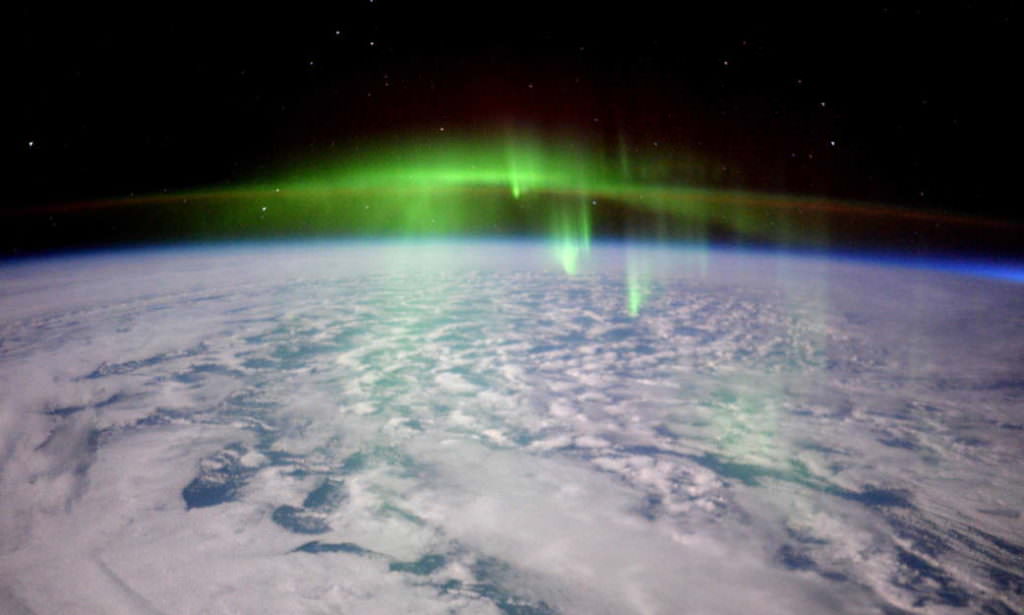A Solo Brown Dwarf Found With Auroras
Astronomers have used JWST to find a brown dwarf with polar auroras like the Earth, or Jupiter. This is surprising because the brown dwarf, dubbed W1935, is a free-floating object, meaning it isn’t part of another star system. Therefore, there’s no solar wind available to generate any Northern Lights. Instead, the auroras are seemingly generated from methane emissions in the planet’s atmosphere, interacting with the interstellar plasma. Another theory is that it perhaps has an active but unseen moon contributing to the emissions.

Brown dwarfs are celestial objects more massive than Jupiter but smaller than a star. Brown dwarfs are considered failed stars because they form like stars do — by the contraction of gas that collapses into a dense core under the force of its own gravity – but brown dwarfs just don’t have enough mass for their cores to burn nuclear fuel and radiate starlight. Planets, meanwhile, form from the accumulation of leftover debris from stars being formed.
Brown dwarfs also do have complex planet-like outer atmospheres, including clouds and molecules such as H2O. Therefore, the fact that this brown dwarf has methane is not a surprise.

But in observing at a distinct infrared wavelength to which JWST is uniquely sensitive, the astronomers were extremely surprised to see methane emissions glowing. Usually methane absorbs visible light, especially at the red end of the spectrum.
“We expected to see methane because methane is all over these brown dwarfs. But instead of absorbing light, we saw just the opposite: The methane was glowing. My first thought was, what the heck? Why is methane emission coming out of this object?” said Jackie Faherty, an astronomer at the American Museum of Natural History in New York, who was awarded time with the Webb telescope to investigate 12 cold brown dwarfs.
Faherty and her team used computer models to infer what might be behind the emission. The models showed that the atmosphere on W1935 got warmer with increasing altitude, while the other brown dwarfs they were observing showed the expected opposite, where the distribution of energy throughout the atmosphere became cooler with increasing altitude.
“This temperature inversion is really puzzling,” said Ben Burningham, a co-author from the University of Hertfordshire in England and lead modeler on the work. “We have seen this kind of phenomenon in planets with a nearby star that can heat the stratosphere, but seeing it in an object with no obvious external heat source is wild.”

On Earth, aurorae are created when energetic particles ejected into space from the Sun are captured by Earth’s magnetic field. They cascade down into our atmosphere along magnetic field lines near Earth’s poles, colliding with gas molecules and creating the aurora we all love to see. Jupiter and Saturn have similar auroral processes that involve interacting with the solar wind, but they also get auroral contributions from nearby active moons like Io (for Jupiter) and Enceladus (for Saturn).
But for rogue brown dwarfs like W1935, the absence of a stellar wind to contribute to the auroral process and explain the extra energy in the upper atmosphere required for the methane emission is a mystery. The team surmises that either unaccounted internal processes like the atmospheric phenomena of Jupiter and Saturn, or external interactions with either interstellar plasma or a nearby active moon may help account for the emission.
The astronomers plan to keep an eye on W1935 to learn more about what is happening there, and if possibly an unseen active moon might play a role in the methane emissions.
“With W1935, we now have a spectacular extension of a Solar System phenomenon without any stellar irradiation to help in the explanation,” Faherty noted. “With Webb, we can really ‘open the hood’ on the chemistry and unpack how similar or different the auroral process may be beyond our Solar System.”
W1935 was originally found by a citizen scientist named Dan Casslden as the Backyard Worlds Zooniverse project. The new findings of methane aurorae were presented at the 243rd meeting of the American Astronomical Society in New Orleans.
The post A Solo Brown Dwarf Found With Auroras appeared first on Universe Today.
Universe Today
Go to Source